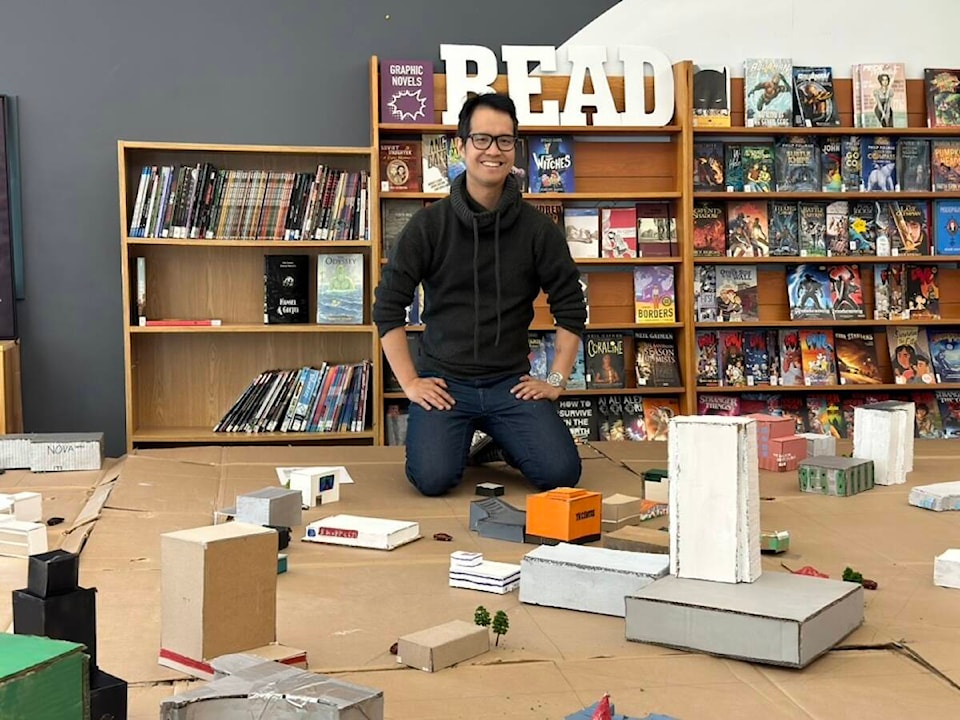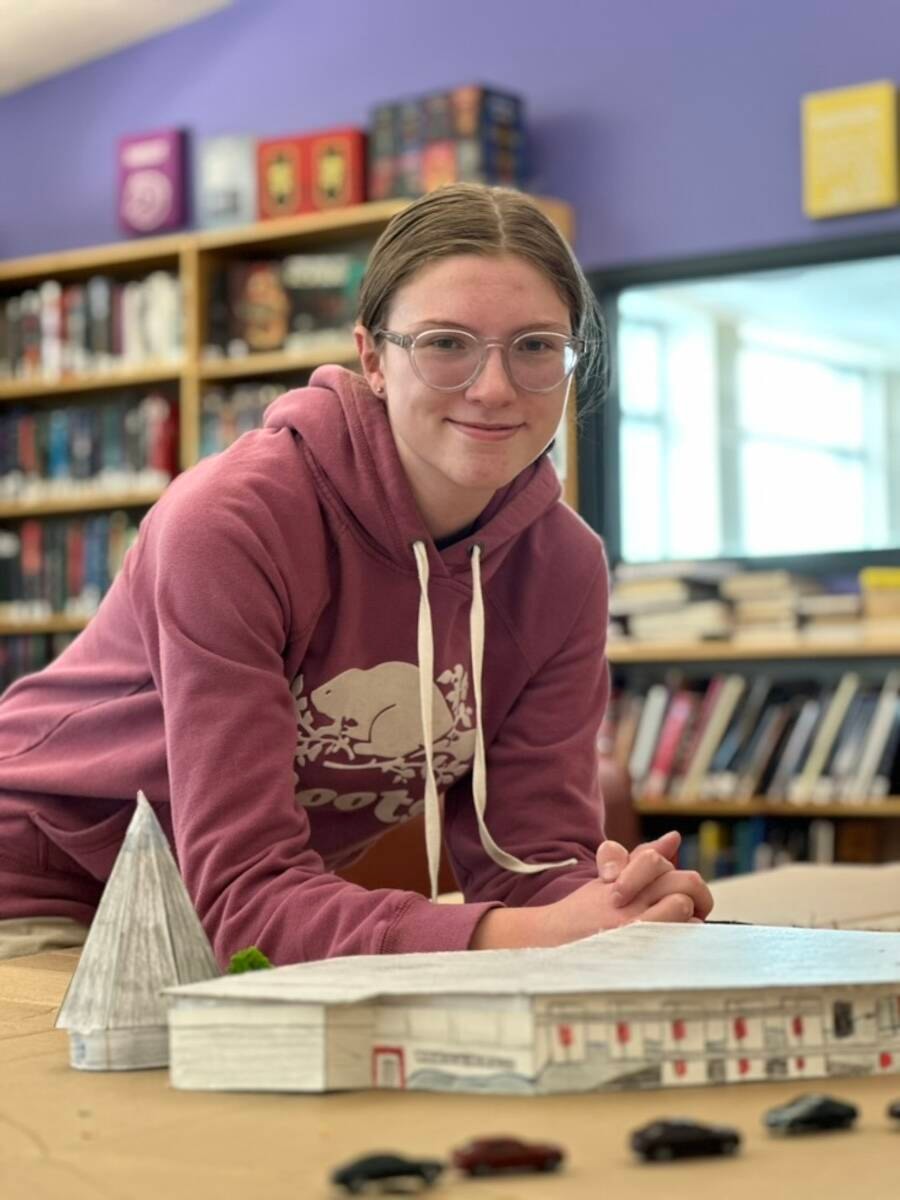If you thought teaching math by building downtown couldn’t happen, think again.
Grade 9 students at St. Patrick High School were tasked to create a 1/200-scale model of one square kilometre of downtown Yellowknife. The students were given one of the buildings and place it on a map as part of a project. The idea was part of the newly-implemented B.C school curriculum, a part of which focuses on scale and size.
“We wanted to make sure that we focus more on hands-on projects and group work, rather than just testing on paper,” said math teacher Chris Wong.
He added that the project is designed to strengthen students’ problem-solving and communication abilities.
Throughout the project, Wong said he saw students more engaged and motivated compared to last year.
“At the end, you get to see all the hard work that you have put in, not just getting a letter grade from your teacher,” he said.
Close to 60 students are working on the project and since the school has limited space, the crafts won’t be a permanent decoration in the school. At the end of the project, students have the choice to take them home.
Student Nicholas Graham built Joint Task Force North (JTFN) using foil paper and foam board. The project took approximately six hours for both drafting and putting the building together.
He said he was inspired by the project and is looking forward to becoming a drafter for the aviation industry.
Mairin Campbell and Leslie Pineda built Mildred Hall School, which took them two and a half weeks.
The blueprint took the most time to complete, but Campbell realized that drafting was easier than what she thought it would be.
“Originally, we had to find the calculations, the heights of everything, scale it down and draw the top, front, side and back,” said Campbell.
They used Google Maps to help with the dimensions of the building in real life and simply divided it by 200.
Principal Don Reid said it had been a long time since he’s seen kids actively solving mathematical problems.
“Some of our kids were so perfect that they went back to the different buildings several times to measure and re-measure, making sure that they had the right measurements,” he said.
Reid said the most important part for him wasn’t if their measurements were off by one or two centimetres, but to see the engagement, and to hear kids talk to their parents about what they had done during the project.
“Most of the time, kids go home and the parents may ask ‘what did you do today?’ (The kids will say) ‘nothing, nothing, nothing.’ And that’s what I was saying when I was a kid,” said Reid.
Reid added that the school will try to implement welding, computer numerical control milling, plasma cutters, and 3D printers as part of future projects for students.

